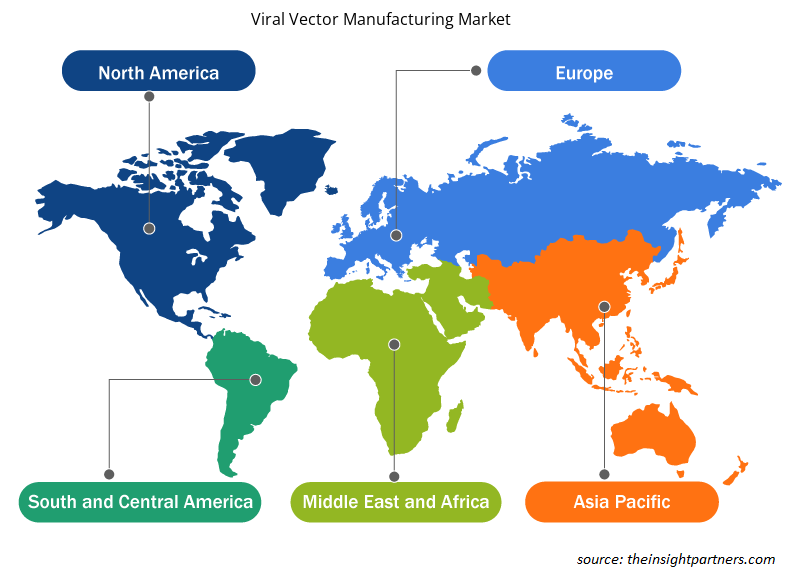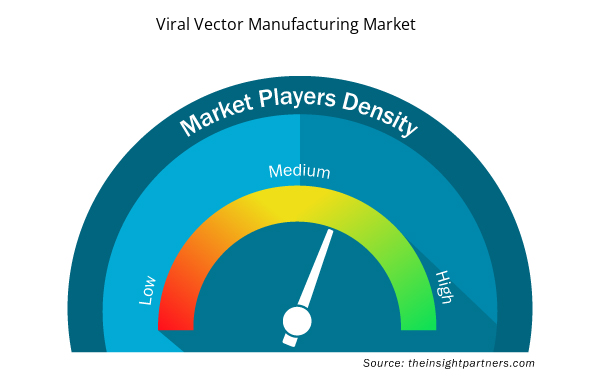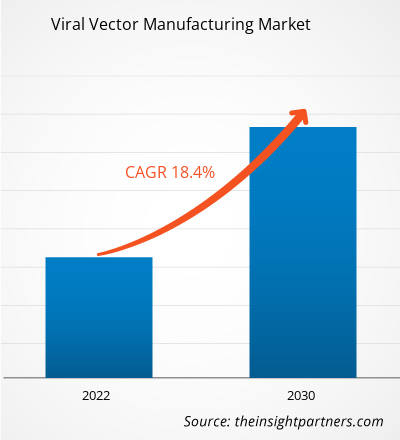[研究报告] 病毒载体制造市场预计将从 2022 年的 12.9 亿美元增长到 2030 年的 50 亿美元;预计2022-2030 年期间市场复合年增长率为 18.4%。
市场洞察和分析师观点:
病毒载体有助于将遗传物质输送到细胞中。各种类型的病毒载体都可用于将核酸带入细胞的遗传组成中,包括 慢病毒、腺病毒、逆转录病毒和腺相关病毒,每种载体在某些应用方面都有各自的优点和缺点。病毒载体用于基因和细胞治疗,作为预防和治疗疫苗的基础。推动市场增长的关键因素是临床研究和病毒载体疗法的开发不断增加,以及对基因治疗的需求不断增加。然而,复杂的病毒载体开发过程阻碍了病毒载体制造市场的增长。此外,病毒载体制造商的技术进步和战略活动预计将在未来几年带来新的病毒载体制造市场趋势。
增长动力和限制因素:
细胞和基因疗法的最新发展使得治疗各种疾病(包括先天性疾病和癌症)成为可能,这增加了病毒载体制造市场的规模。根据 2022 年 9 月在Elsevier Journal 上发表的研究“基因治疗临床试验,我们该何去何从?”,第一种基因治疗产品Gendicine在中国国家食品药品监督管理局 ( SFDA )进行了约 686 次临床试验后获批用于治疗头颈癌。2012 年,欧洲药品管理局 ( EMA )批准Glybera用于治疗脂蛋白脂肪酶缺乏症,临床试验数量翻了一番。同样,2017 年,FDA 批准了两种嵌合抗原受体 (CAR) 产品——Kymriah和Yescarta。此外,2019 年, FDA 批准了Zolgensma(迄今为止最昂贵的药物),这是一种腺相关病毒载体 ( AAV ),用于进行治疗儿童脊髓性肌萎缩症的基因疗法。
同样,美国食品药品管理局 (FDA)近年来批准了许多基于病毒载体的基因疗法。根据 FDA 组织和先进疗法办公室 ( OTAT ) 的数据,截至 2023 年 8 月,FDA 已批准了 30 多种病毒载体治疗产品。同样,根据 Evaluate Pharma 的数据,截至 2023 年 2 月,约有 120 种病毒载体疗法处于 II 期试验阶段。因此,每年获批的基因治疗产品和基于病毒载体的基因疗法数量大幅增加,推动了病毒载体制造市场规模的增长。
然而,开发病毒载体是一个复杂的过程,涉及病毒载体生产和质量控制措施方面的挑战。病毒载体的生产需要专门的设备和设施,并遵守良好生产规范 ( GMP ) 和其他监管标准,以确保最终产品的纯度、安全性和有效性。这可能给制造商带来重大挑战,尤其是小公司或新进入者,因为他们的资源和专业知识有限,无法满足这些要求。此外,大规模病毒载体生产还面临各种其他挑战,例如生产系统不兼容,这可能会影响病毒载体开发的不同阶段。
Patheon (赛默飞世尔科技的服务品牌)表示,病毒载体的商业化需要监管方面的考虑,以减轻不必要的风险,例如时间紧迫、检测挑战和变异性、使用致瘤细胞系的原材料以及商业规模可用的批次有限。因此,复杂的病毒载体开发过程阻碍了病毒载体制造市场的扩张。
定制此报告以满足您的需求
您可以免费定制任何报告,包括本报告的部分内容、国家级分析、Excel 数据包,以及为初创企业和大学提供优惠和折扣
- 获取此报告的关键市场趋势。这个免费样品将包括数据分析,从市场趋势到估计和预测。
报告细分和范围:
“病毒载体制造市场分析”是通过考虑以下部分进行的:类型、疾病适应症、应用和最终用户。根据类型,市场分为腺病毒载体、腺相关病毒载体、慢病毒载体、逆转录病毒载体和其他。根据疾病适应症,市场分为癌症、遗传疾病、传染病和其他。在应用方面,市场分为治疗开发、疫苗开发和研究。根据最终用户,病毒载体制造市场分为制药和生物技术公司、研究机构以及 CDMO 和 CRO。从地理上看,市场主要分为北美(美国、加拿大和墨西哥)、欧洲(西班牙、英国、德国、法国、意大利和欧洲其他地区)、亚太地区(韩国、中国、印度、日本、澳大利亚和亚太其他地区)、中东和非洲(南非、沙特阿拉伯、阿联酋和中东和非洲其他地区)以及南美洲和中美洲(巴西、阿根廷和南美洲和中美洲其他地区)。
节段分析:
根据类型,市场分为腺病毒载体、腺相关病毒载体、慢病毒载体、逆转录病毒载体等。腺相关病毒载体部分在 2022 年占据了最大的病毒载体制造市场份额。慢病毒载体部分预计在 2022-2030 年期间的复合年增长率最高。
根据疾病适应症,病毒载体制造市场细分为癌症、遗传疾病、传染病等。癌症领域在 2022 年占据最大市场份额,而遗传疾病领域预计在 2022 年至 2030 年期间的复合年增长率最高。
根据应用,市场分为治疗学开发、疫苗开发和研究。2022 年,疫苗开发领域占据最大市场份额,治疗学开发领域预计在 2022-2030 年期间实现最高复合年增长率。
就最终用户而言,市场分为制药和生物技术公司、研究机构以及 CDMO 和 CRO。预计制药和生物技术公司部门将在 2022-2030 年期间占据病毒载体制造市场的很大份额。
区域分析:
全球病毒载体制造市场报告的范围重点关注北美、欧洲、亚太、南美和中美以及中东和非洲。
就收入而言,北美占据了病毒载体制造市场份额的主导地位。医疗基础设施的发展、癌症和遗传疾病的流行以及美国医疗服务支出的增加是推动该国市场增长的关键因素。例如,根据美国癌症协会的估计,2022 年,美国诊断出约 190 万例新癌症病例,报告癌症死亡人数超过 609,000 人。因此,在临床试验、疫苗开发和癌症治疗和其他疾病的生物医学研究中使用病毒载体将对病毒载体制造市场的增长产生重大影响。
行业发展和未来机遇:
病毒载体制造市场预测可以帮助该市场的利益相关者规划其增长战略。以下列出了市场中主要参与者采取的一些举措:
- 2023 年 7 月,Biovian Oy 宣布扩建其位于芬兰图尔库的制造工厂。该公司宣布对占地 69,000 平方英尺的工厂进行超过 5000 万欧元(约合 55 美元)的重大投资。该工厂拥有先进的技术和尖端设备,以支持先进治疗药物的开发和制造,例如腺病毒和腺相关病毒载体 (AAV) 疗法。该制造工厂还设有专用的 A 至 D 级洁净室区域,用于散装药物材料和最终药物产品的制造。
- 2023 年 5 月,全球领先的生物制药合同开发和制造组织 (CDMO) AGC Biologics 推出了两个病毒载体平台:BravoAAV 和 ProntoLVV。AGC Biologics 的创新平台利用其在慢病毒载体 (LVV) 和 AAV 的开发、制造和分析方面 30 年的综合经验,提供快速、有效且可重复的临床和商业 GMP 生产和发布。由于其专利方法和衣壳特异性平台方法可以缩短开发时间,CDMO 可以在 9 个月内提供 GMP 产品。
- 2023 年 3 月,Catalent 宣布扩展其 UpTempo 平台流程,用于 AAV 的开发和 CGMP 制造。Catalent 是促进发现和提供更好的患者药物的全球先驱。该平台现在包括内部克隆 HEK293 细胞系和商业质粒,以促进基因疗法研究和生产的强大供应链,并加快首次人体临床评估的持续时间。
- 2023 年 3 月,Vector Biolabs 宣布完成设施扩建。新建的设施拥有办公空间、仓库、质控实验室和洁净室制造套件。凭借额外的产能,即使现场需求增长,Vector 也能继续提供快速响应时间,并扩大其产品范围,包括新产品表征和质量控制服务。
- 2022 年 8 月,默克推出 VirusExpress 293 AAV 生产平台,成为首批提供完整病毒载体制造服务的 CDMO 和技术开发商之一,包括 AAV、慢病毒、CDMO、CTO 和工艺开发。借助这一新平台,生物制药企业现在可以加速临床制造,同时最大限度地减少与工艺开发相关的成本和时间。
- 2020 年 9 月,OXGENE 正式推出了其可扩展的无质粒 AAV 制造方法。OXGENE 最近开发的 TESSA 技术解决了与大规模可靠且一致的 AAV 生产相关的行业问题。
病毒载体制造市场区域洞察
Insight Partners 的分析师已详细解释了预测期内影响病毒载体制造市场的区域趋势和因素。本节还讨论了北美、欧洲、亚太地区、中东和非洲以及南美和中美洲的病毒载体制造市场细分和地理位置。

- 获取病毒载体制造市场的区域特定数据
病毒载体制造市场报告范围
| 报告属性 | 细节 |
|---|---|
| 2022 年市场规模 | 12.9亿美元 |
| 2030 年的市场规模 | 50亿美元 |
| 全球复合年增长率(2022 - 2030 年) | 18.4% |
| 史料 | 2020-2022 |
| 预测期 | 2022-2030 |
| 涵盖的领域 | 按类型
|
| 覆盖地区和国家 | 北美
|
| 市场领导者和主要公司简介 |
|
病毒载体制造市场参与者密度:了解其对业务动态的影响
病毒载体制造市场正在快速增长,这得益于最终用户需求的不断增长,而这些需求又源于消费者偏好的不断变化、技术进步以及对产品优势的认识不断提高等因素。随着需求的增加,企业正在扩大其产品范围,进行创新以满足消费者的需求,并利用新兴趋势,从而进一步推动市场增长。
市场参与者密度是指在特定市场或行业内运营的企业或公司的分布情况。它表明在给定市场空间中,相对于其规模或总市场价值,有多少竞争对手(市场参与者)存在。
在病毒载体制造市场运营的主要公司有:
- 查尔斯河实验室
- 默克公司
- 比奥维安公司
- 全球生命科学解决方案美国有限责任公司
- 龙沙集团有限公司
免责声明:上面列出的公司没有按照任何特定顺序排列。

- 获取病毒载体制造市场顶级关键参与者概览
竞争格局和重点公司:
Charles River Laboratories、Merck KGaA、Biovian Oy、Global Life Sciences Solutions USA LLC、Lonza Group Ltd、Creative Biogene、VIVEbiotech SL、Genezen Laboratories Inc、GenScript Biotech Corporation 和 AGC Biologics 是病毒载体制造市场的知名企业。这些公司专注于新技术、现有产品的改进和地域扩张,以满足全球日益增长的消费者需求,并扩大其专业产品组合的产品范围。
- Analisi storica (2 anni), anno base, previsione (7 anni) con CAGR
- Analisi PEST e SWOT
- Valore/volume delle dimensioni del mercato - Globale, regionale, nazionale
- Industria e panorama competitivo
- Set di dati Excel



Report Coverage
Revenue forecast, Company Analysis, Industry landscape, Growth factors, and Trends

Segment Covered
This text is related
to segments covered.

Regional Scope
North America, Europe, Asia Pacific, Middle East & Africa, South & Central America

Country Scope
This text is related
to country scope.
Domande frequenti
The viral vector manufacturing market majorly consists of the players, including Charles River Laboratories, Merck KGaA, Biovian Oy, Global Life Sciences Solutions USA LLC, Lonza Group Ltd, Creative Biogene, VIVEbiotech SL, Genezen Laboratories Inc, GenScript Biotech Corporation, and AGC Biologics
Key factors driving the viral vector manufacturing market growth are increasing clinical studies and development of viral-vector therapeutics and increasing demand for gene therapy.
The viral vector manufacturing market was valued at US$ 1.29 billion in 2022.
Based on type, the viral vector manufacturing market is differentiated into adenoviral vectors, adeno-associated viral vectors, lentiviral vectors, retroviral vectors, and others. The adeno-associated viral vectors segment held the largest market share in 2022. The lentiviral vectors segment is anticipated to register the highest CAGR during 2022–2030.
Viral vectors help deliver genetic material into cells. Various types of viral vectors can be used to carry nucleic acids into the genetic composition of cells, including lentivirus, adenovirus, retrovirus, and adeno-associated virus, each with its own set of benefits and drawbacks for certain applications. Viral vectors are used in gene and cell therapy as a basis for prophylactic and therapeutic vaccines.
In terms of end user, the viral vector manufacturing market is segmented into pharmaceutical & biotechnology companies, research institutes, and CDMOs & CROs. In 2022, the pharmaceutical & biotechnology companies segment held the largest market share and is anticipated to register the highest CAGR during 2022–2030.
By application, the viral vector manufacturing market is differentiated into therapeutics development, vaccine development, and research. In 2022, the vaccine development segment held the largest market share, and the therapeutics development segment is anticipated to register the highest CAGR during 2022–2030.
The viral vector manufacturing market is expected to be valued at US$ 5.00 billion in 2030.
Based on disease indication, the viral vector manufacturing market is segmented into cancer, genetic disorders, infectious disease, and others. The cancer segment held the largest market share in 2022, and the genetic disorders segment is anticipated to register the highest CAGR from 2022 to 2030.
Trends and growth analysis reports related to Life Sciences : READ MORE..
The List of Companies - Viral Vector Manufacturing Market
- Charles River Laboratories
- Merck KGaA
- Biovian Oy
- Global Life Sciences Solutions USA LLC
- Lonza Group Ltd
- Creative Biogene
- VIVEbiotech SL
- Genezen Laboratories Inc
- GenScript Biotech Corporation
- AGC Biologics
The Insight Partners performs research in 4 major stages: Data Collection & Secondary Research, Primary Research, Data Analysis and Data Triangulation & Final Review.
- Data Collection and Secondary Research:
As a market research and consulting firm operating from a decade, we have published and advised several client across the globe. First step for any study will start with an assessment of currently available data and insights from existing reports. Further, historical and current market information is collected from Investor Presentations, Annual Reports, SEC Filings, etc., and other information related to company’s performance and market positioning are gathered from Paid Databases (Factiva, Hoovers, and Reuters) and various other publications available in public domain.
Several associations trade associates, technical forums, institutes, societies and organization are accessed to gain technical as well as market related insights through their publications such as research papers, blogs and press releases related to the studies are referred to get cues about the market. Further, white papers, journals, magazines, and other news articles published in last 3 years are scrutinized and analyzed to understand the current market trends.
- Primary Research:
The primarily interview analysis comprise of data obtained from industry participants interview and answers to survey questions gathered by in-house primary team.
For primary research, interviews are conducted with industry experts/CEOs/Marketing Managers/VPs/Subject Matter Experts from both demand and supply side to get a 360-degree view of the market. The primary team conducts several interviews based on the complexity of the markets to understand the various market trends and dynamics which makes research more credible and precise.
A typical research interview fulfils the following functions:
- Provides first-hand information on the market size, market trends, growth trends, competitive landscape, and outlook
- Validates and strengthens in-house secondary research findings
- Develops the analysis team’s expertise and market understanding
Primary research involves email interactions and telephone interviews for each market, category, segment, and sub-segment across geographies. The participants who typically take part in such a process include, but are not limited to:
- Industry participants: VPs, business development managers, market intelligence managers and national sales managers
- Outside experts: Valuation experts, research analysts and key opinion leaders specializing in the electronics and semiconductor industry.
Below is the breakup of our primary respondents by company, designation, and region:

Once we receive the confirmation from primary research sources or primary respondents, we finalize the base year market estimation and forecast the data as per the macroeconomic and microeconomic factors assessed during data collection.
- Data Analysis:
Once data is validated through both secondary as well as primary respondents, we finalize the market estimations by hypothesis formulation and factor analysis at regional and country level.
- Macro-Economic Factor Analysis:
We analyse macroeconomic indicators such the gross domestic product (GDP), increase in the demand for goods and services across industries, technological advancement, regional economic growth, governmental policies, the influence of COVID-19, PEST analysis, and other aspects. This analysis aids in setting benchmarks for various nations/regions and approximating market splits. Additionally, the general trend of the aforementioned components aid in determining the market's development possibilities.
- Country Level Data:
Various factors that are especially aligned to the country are taken into account to determine the market size for a certain area and country, including the presence of vendors, such as headquarters and offices, the country's GDP, demand patterns, and industry growth. To comprehend the market dynamics for the nation, a number of growth variables, inhibitors, application areas, and current market trends are researched. The aforementioned elements aid in determining the country's overall market's growth potential.
- Company Profile:
The “Table of Contents” is formulated by listing and analyzing more than 25 - 30 companies operating in the market ecosystem across geographies. However, we profile only 10 companies as a standard practice in our syndicate reports. These 10 companies comprise leading, emerging, and regional players. Nonetheless, our analysis is not restricted to the 10 listed companies, we also analyze other companies present in the market to develop a holistic view and understand the prevailing trends. The “Company Profiles” section in the report covers key facts, business description, products & services, financial information, SWOT analysis, and key developments. The financial information presented is extracted from the annual reports and official documents of the publicly listed companies. Upon collecting the information for the sections of respective companies, we verify them via various primary sources and then compile the data in respective company profiles. The company level information helps us in deriving the base number as well as in forecasting the market size.
- Developing Base Number:
Aggregation of sales statistics (2020-2022) and macro-economic factor, and other secondary and primary research insights are utilized to arrive at base number and related market shares for 2022. The data gaps are identified in this step and relevant market data is analyzed, collected from paid primary interviews or databases. On finalizing the base year market size, forecasts are developed on the basis of macro-economic, industry and market growth factors and company level analysis.
- Data Triangulation and Final Review:
The market findings and base year market size calculations are validated from supply as well as demand side. Demand side validations are based on macro-economic factor analysis and benchmarks for respective regions and countries. In case of supply side validations, revenues of major companies are estimated (in case not available) based on industry benchmark, approximate number of employees, product portfolio, and primary interviews revenues are gathered. Further revenue from target product/service segment is assessed to avoid overshooting of market statistics. In case of heavy deviations between supply and demand side values, all thes steps are repeated to achieve synchronization.
We follow an iterative model, wherein we share our research findings with Subject Matter Experts (SME’s) and Key Opinion Leaders (KOLs) until consensus view of the market is not formulated – this model negates any drastic deviation in the opinions of experts. Only validated and universally acceptable research findings are quoted in our reports.
We have important check points that we use to validate our research findings – which we call – data triangulation, where we validate the information, we generate from secondary sources with primary interviews and then we re-validate with our internal data bases and Subject matter experts. This comprehensive model enables us to deliver high quality, reliable data in shortest possible time.


 Ottieni un campione gratuito per questo repot
Ottieni un campione gratuito per questo repot